The Oxford University Church of St Mary the Virgin is sometimes overlooked as a place to visit, standing as it does in competition with its more flamboyant neighbours in Radcliffe Square. But this thousand year old building with its iconic landmark spire has stood here far longer than the others nearby and played host to a plethora of historical events including both the birth of the University in the 13th century and of OXFAM in the 20th. Most famously it was where Archbishop Cranmer was tried for heresy in 1556 on a specially raised platform in the nave (a pillar still shows the scars) before being de-robed and sent to be burned at the stake.
But it was to see something else that I had taken shelter here last week as the rain lashed down on the brown cobbles outside. Tucked away behind the altar rail there is a little known memorial to one Amy Robsart. It faces inwards so you are forced either to read it upside down or manipulate your neck through 180 degrees. And though the words are clear enough,
‘In a vault of brick
at the upper end of this Quire
was buried
AMY ROBSART
Wife of
LORD ROBERT DUDLEY K G
on Sunday 22nd September
AD 1560.’
the circumstances surrounding this woman’s death most certainly are not. Found at the bottom of the staircase of her home with two head injuries and a broken neck, the question still remains as it did at the time; did she fall, did she jump, or was she pushed? It’s a story of mystery and suspicion, intrigue and conspiracy that could easily sit in the pages of an Inspector Morse novel.
When Amy Robsart married Robert Dudley in 1550, both aged 18, they were by all accounts madly in love. Both came from wealthy Protestant families, and at the time of their wedding which Edward V1 himself attended, their futures looked blessed. But these were turbulent days for those following the new religion. When the Catholic Mary took the throne, Dudley found himself on the wrong side, supporting a plot to put his sister in law Lady Jane Grey on the throne. His father and older brother were executed for treason, while Amy found herself visiting her new husband left languishing but alive in the Tower of London.
However their fortunes changed again when Elizabeth ascended the throne in November 1558. The Queen and Dudley had known each other from their Protestant childhoods. She made him her Master of Horse, the only position in the royal household where (apart from her ladies in waiting) it was permissible to touch her. She lavished the good-looking aristocrat with attention, and tasked him much responsibility including organising her coronation. He never seemed to leave her side. Rumours began to take hold that he was her favoured choice as a husband. There was only one problem. He was already married.
Meanwhile by 1560 Amy was living at the invitation of a family friend, in an apartment in Cumnor House, near Oxford, a former monastic establishment built around a quadrangle with its own deer park. She saw her husband infrequently. Indeed on the day of her death on 8 September she had not seen him for over a year. That morning she had sent her household to the local fair at Abingdon, leaving her alone apart from one older servant who retired to her room. When they returned later that afternoon they found her lifeless body at the bottom of the stairs.
Dudley gave her a lavish funeral. Her body was embalmed and then taken to lie in Gloucester College (now Worcester College). Hung with black cloth and the arms of the house of Dudley, the coffin was then processed to the west door of the church of St Mary – two conductors with staves followed by her chief mourners, as well as University officers, royal heralds with banners, the Mayor of Oxford and his men, and well as ’80 poor men and women’ and a full choir, singing as they went. At a cost of £2,000, a vast amount for the time, it must have been quite an occasion.
Dudley retired to his house in Kew and ordered a full investigation. The coroner’s conclusion was that her death was caused by ‘misfortune’, in other words an accident. There are reports that she was suffering from breast cancer, which can cause weakness to the bones, making a fall more possible.
But there are other theories too.
One is that she killed herself. After all it seems odd that she had insisted that all her servants attend the fair, even though being Sunday, some thought it an inappropriate outing. According to one of her maids she was having bouts of depression, and paranoia. Not surprising when she barely saw her husband, and she was desperate for a child. An intelligent woman, it must have been difficult to stomach the gossip surrounding Dudley. But then again only the week before she was ordering velvet from the local mercer to be made into gowns. Is this the action of a suicidal woman?
So that leaves murder. But who did it? The person most likely to have gained from her death is Dudley himself. It left him free to marry to Queen. But the very scandal of it all made this impossible. The Queen was forced to distance herself from him, an action he must have known would have happened. Besides he was clearly very fond of his wife and was constantly sending her gifts (twelve pairs of velvet slippers only months before she died). So who else might have been responsible? It could have been at the request of one of the foreign ambassadors, hoping that dashing the Queen’s hopes of marrying Dudley might leave their own monarch in with a chance. Or perhaps it was at the behest of William Cecil, Elizabeth’s chief advisor, who had never liked Dudley, and believed this would put pay to the possibility of Dudley ever becoming the Queen’s consort. Cecil’s position as spymaster would have given him ample means to engineer a cover-up for such an event.
Whatever the truth, we will never know. Elizabeth of course never married. Though Dudley did remarry – to the widow Lettice Knollys, the Countess of Essex, Elizabeth refused to meet the woman she always referred to as the ‘she-wolf’! But the Queen continued to favour her childhood friend. She made him Earl of Leicester, and gave him Kenilworth House and land in Wales. And when he did eventually die, also near Oxford at Cornbury Park, she was apparently heartbroken and kept his last letter by her bedside at all times.
As for Amy it is said that her ghost still haunts the place where Cumnor Hall once stood. And though the exact position of her grave in the church is lost, making it impossible for her body to be examined by more up to date methodology, her memorial still stands. So if ever you are caught in the rain near Radcliffe Square I urge you to seek it out and remember Amy Robsart, and decide for yourself what happened in this remarkable Oxford mystery.
The title picture is called ‘The Death of Amy Robsart’ by William Frederick Yeames (1835-1918) Nottingham City Museums and Galleries

A portrait miniature, thought possibly to be that of Amy Robsart on the occasion of her wedding

Lord Dudley, later Earl of Leicester, around the time of his wife, Amy’s death in 1560
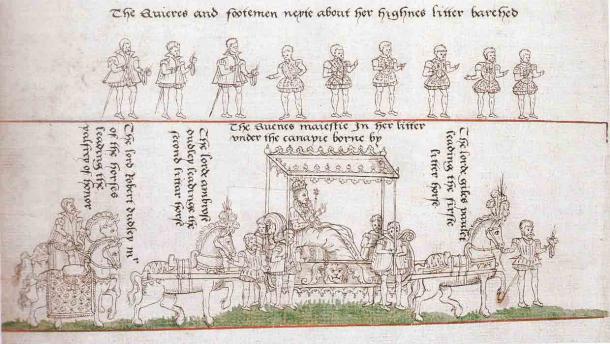
The coronation of Queen Elizabeth 1 – showing Robert Dudley, Master of the Queen’s horse leading the procession
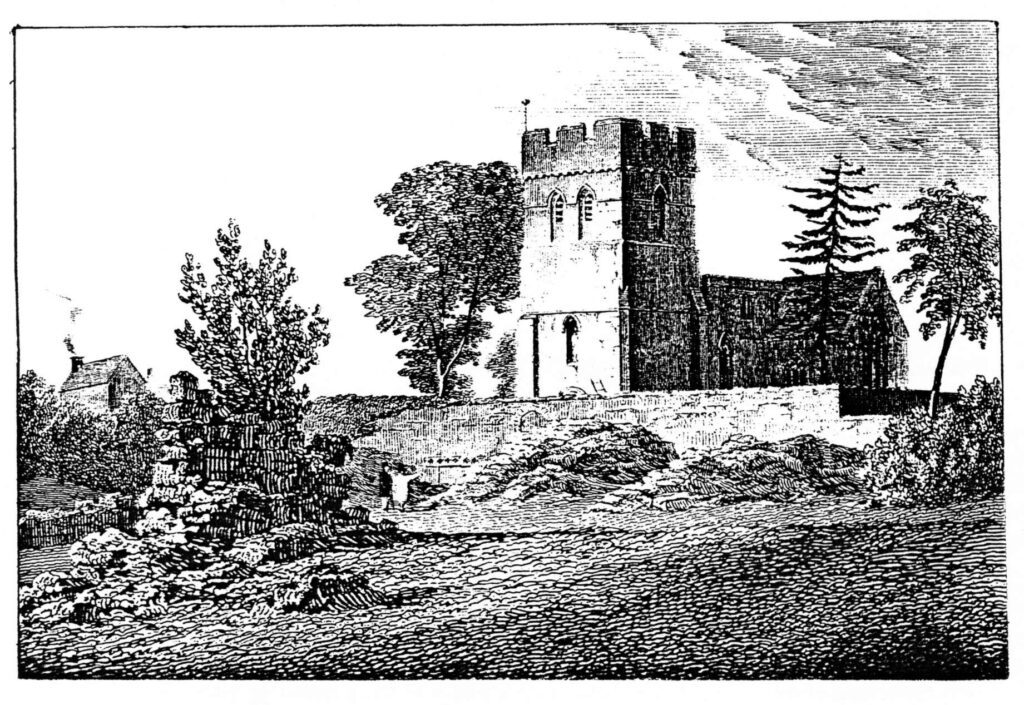
An engraving of Cumnor Church and the ruins of Cumnor Hall, the house in which Amy was living at the time of her death. (Gentleman’s Magazine 1821)
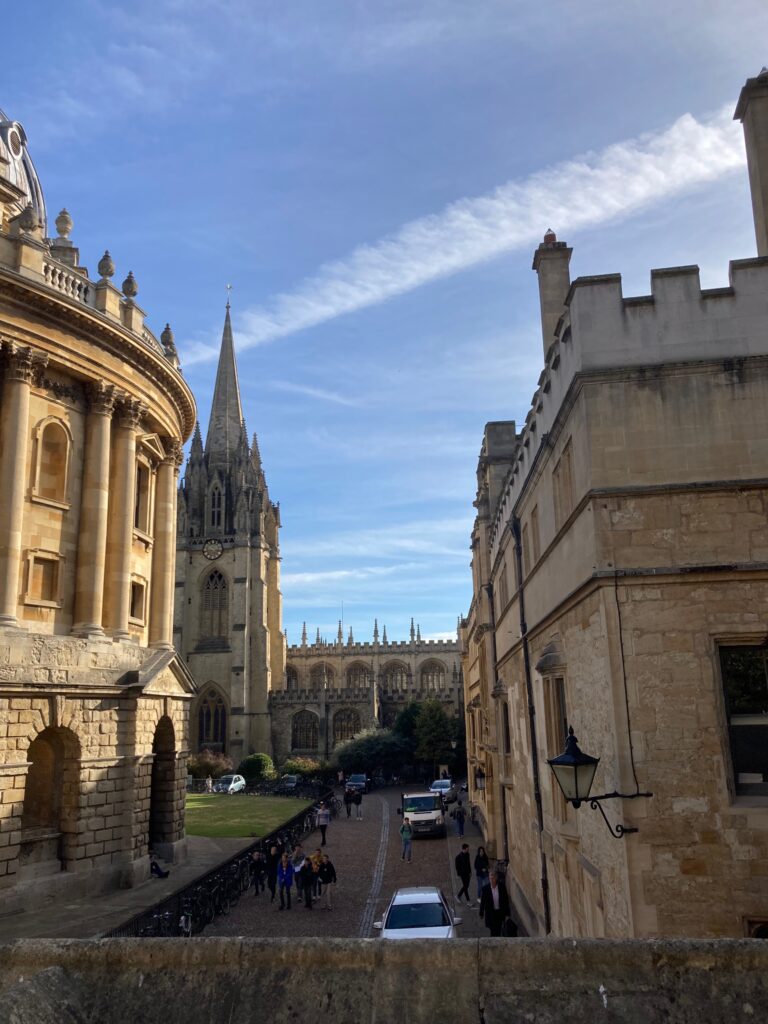
The Church of St Mary the Virgin with its landmark spire where Amy Robsart lies buried, somewhere. While Brasenose on the right of the picture was founded 1509, the iconic Radcliffe Camera was not built for another ninety years after Amy’s funeral.
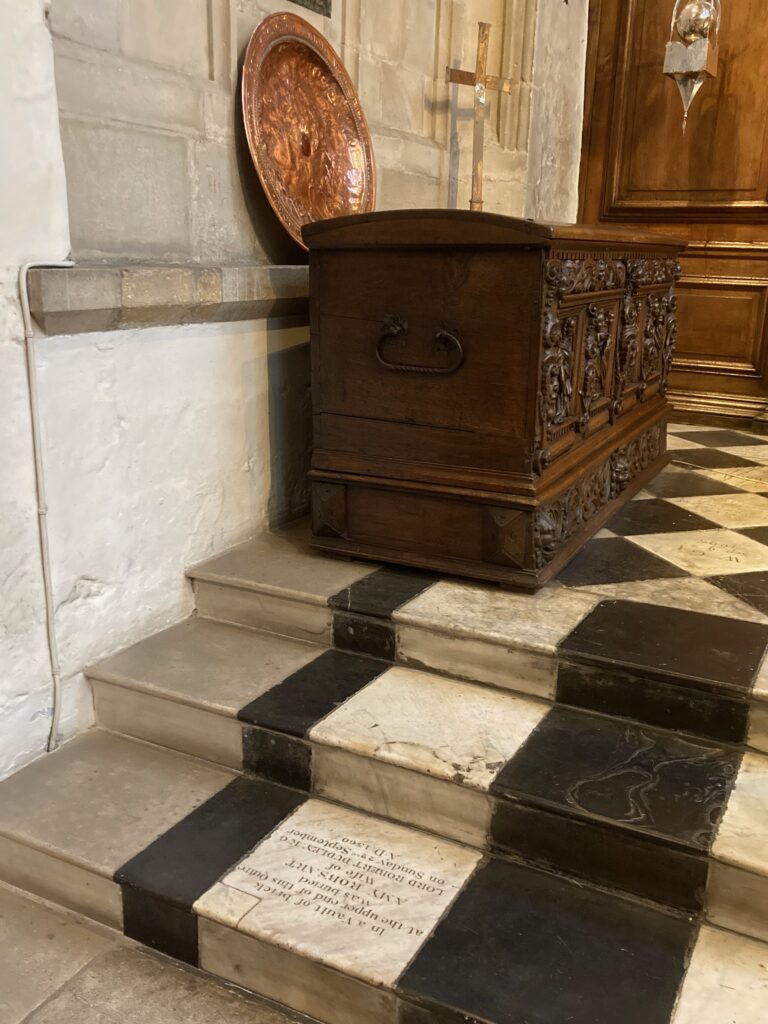
The memorial stone, to the east of the altar.
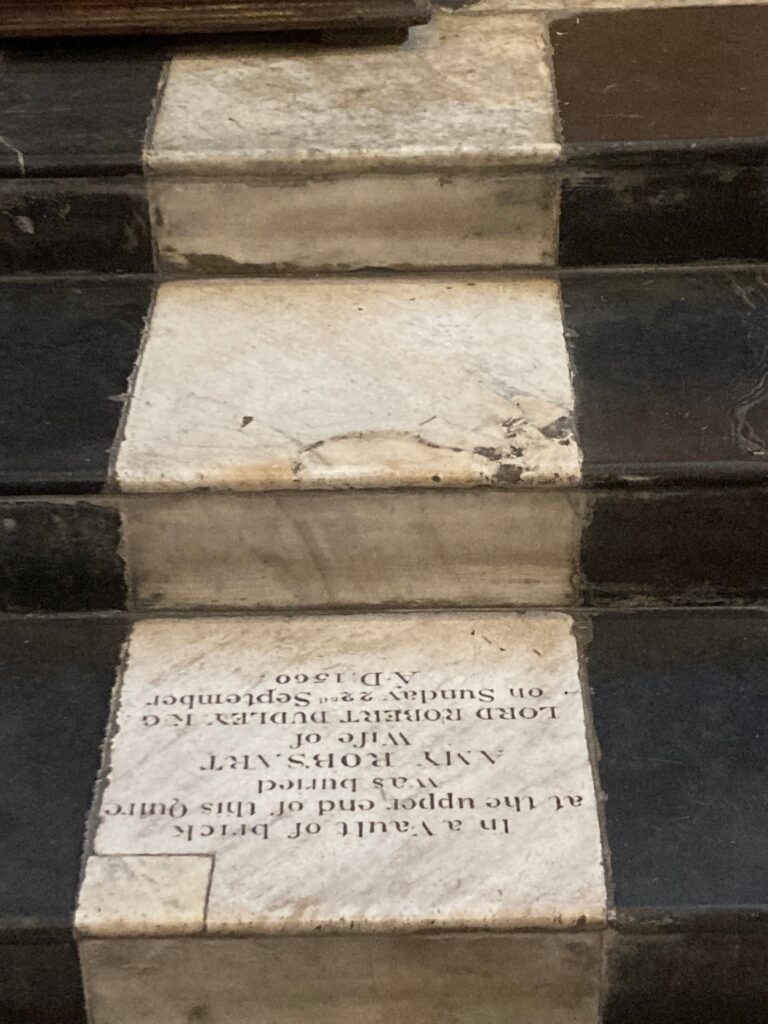
To be read upside down or by cricking your neck!
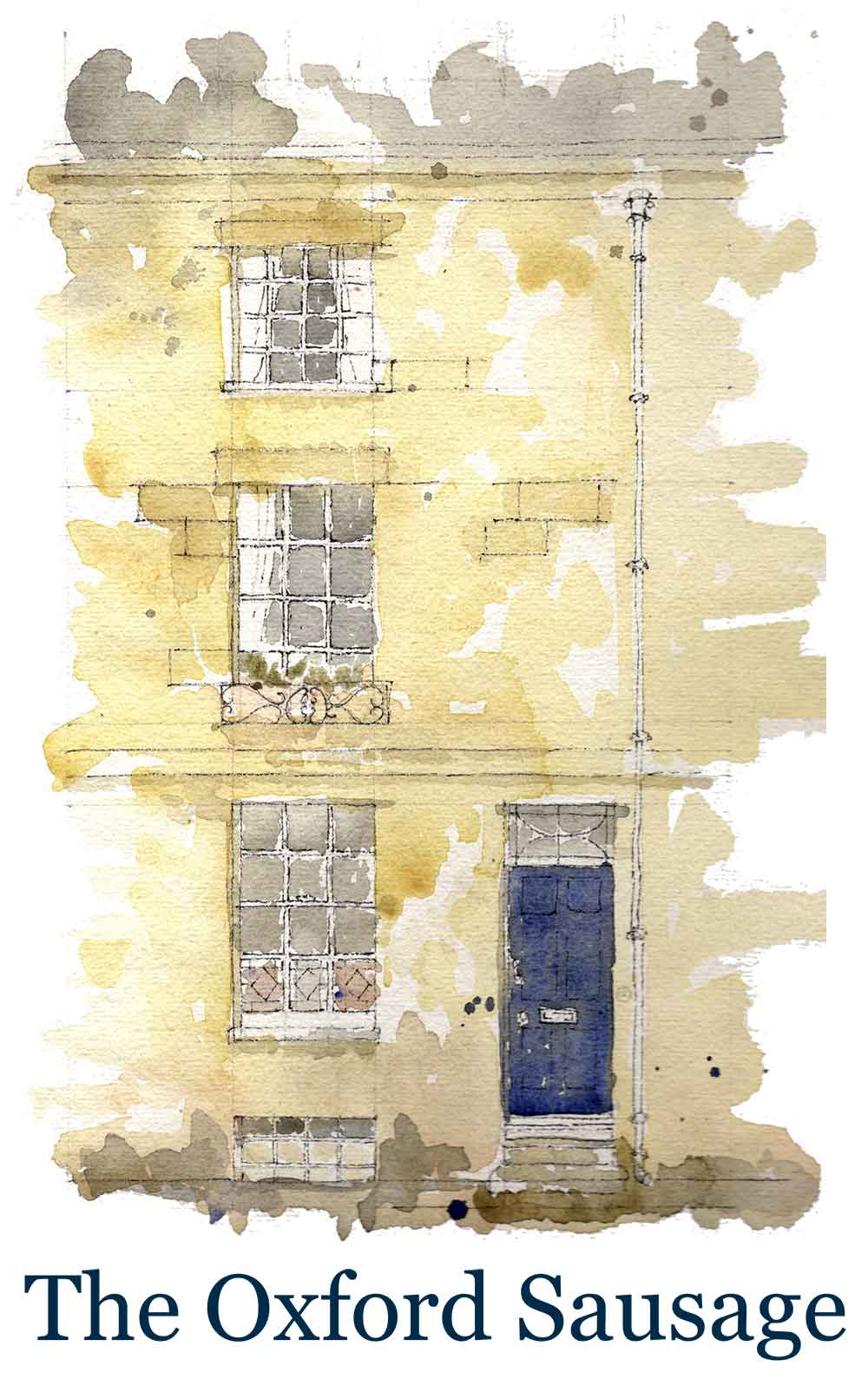
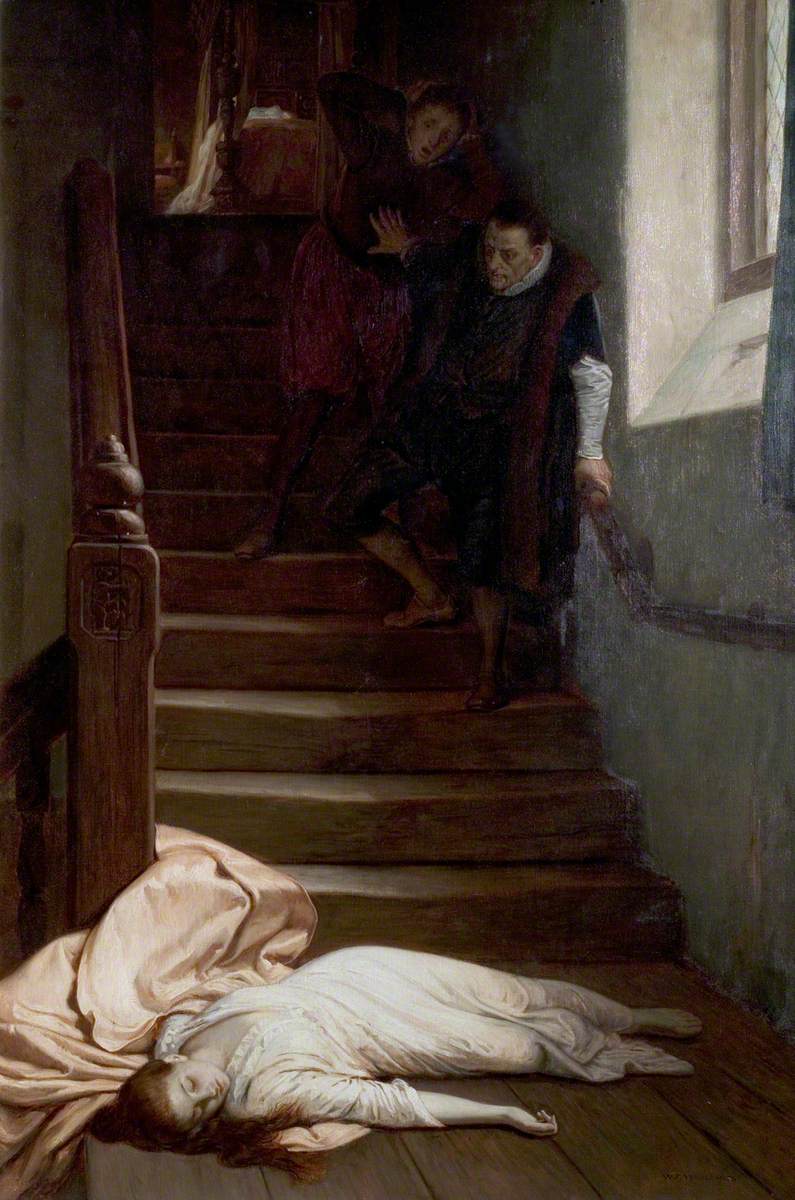
4 Comments
Join the discussion and tell us your opinion.
So intriguing !
Staircases are sooo dangerous. Others known to have died at the bottom of a staircase are: Laura Ashley and Ivana Trump. Not everyone has a happy landing like Kevin McCallister (a Home Alone 1 reference).
Note on the “the iconic Radcliffe Camera was not built for another ninety years after Amy’s funeral”, would correctly be (1749-1560=) 189 years. Cheers for good writing.
How interesting Jim. And of course you are right with the date of The Radcliffe Camera. I should have added another hundred years to my number. What an addition to the square though. Dr Johnson writes ‘Like a Queen in pride of place, she wears the splendour of a crown in Radcliffe’s dome.’
Have been in search of Amy Robsart memorial today. Inspirational blog, Arabella.